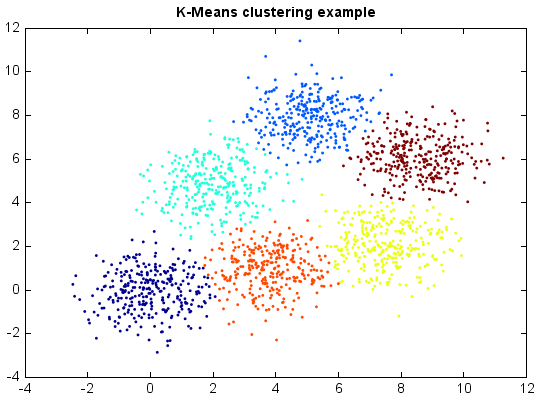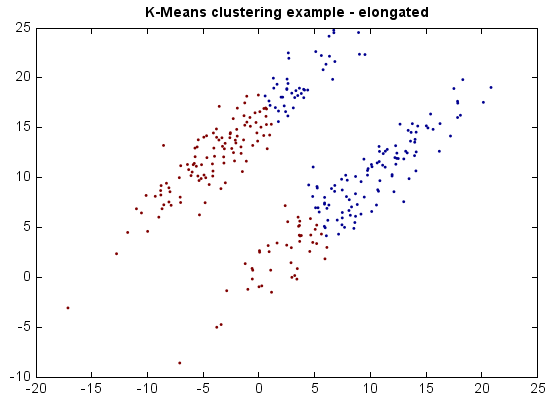K-Means¶
K-Means clustering partitions n observations into k clusters in which each observation belongs to the cluster with the nearest mean. Although finding an exact solution to the K-Means problem for arbitrary input is NP-hard, the standard approach to finding an approximate solution (often called Lloyd’s algorithm or the K-Means algorithm) is used widely and frequently finds reasonable solutions quickly.
K-Means is a hard clustering method, i.e. each sample is assigned to a specific cluster. In contrast, soft clustering, e.g. the Expectation-Maximization algorithm for Gaussian mixtures, assign samples to different clusters with different probabilities.
K-Means works very well on Gaussian mixtures.
from miml import datasets
from miml.cluster import KMeans
fn = os.path.join(datasets.get_data_home(), 'clustering', 'gaussian',
'six.txt')
df = DataFrame.read_table(fn, header=None, names=['x1','x2'],
format='%2f')
x = df.values
model = KMeans(6, runs=20)
y = model.fit_predict(x)
scatter(x[:,0], x[:,1], c=y, edgecolor=None, s=3)
title('K-Means clustering example')

If the clusters are elongated, however, the results may be far from optimal.
from miml import datasets
from miml.cluster import KMeans
fn = os.path.join(datasets.get_data_home(), 'clustering', 'gaussian',
'elongate.txt')
df = DataFrame.read_table(fn, header=None, names=['x1','x2'],
format='%2f')
x = df.values
model = KMeans(2, runs=20)
y = model.fit_predict(x)
scatter(x[:,0], x[:,1], c=y, edgecolor=None, s=3)
title('K-Means clustering example - elongated')


